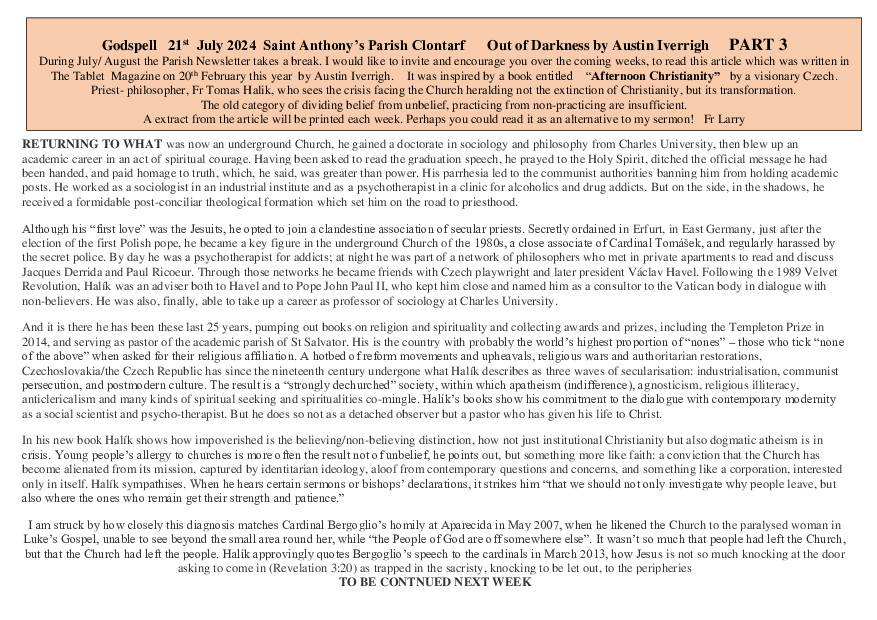History
WHERE ST. ANTHONY’S PARISH FITS INTO THE PAGES OF HISTORY
St. Anthony’s became a Parish in 1966. It was constituted from St. John the Baptist, Clontarf. The boundaries of the Parish extend from the Marino end of the Howth Road to the Railway Bridge – Howth Road. The boundary continues to be formed by the Railway Line as far as Collins Avenue. From this point along the Howth Road as far as Castle Avenue and continuing the entire length of Castle Avenue to the Seafront. The Clontarf Road from here as far as the Marino end of Howth Road completes the boundary.
Even though this is a small parish the district has its place in the history of this part of Clontarf. When Henry II invaded Ireland he gave Meath to Hugh De Lacy, who in turn conquered Dublin. He built strong castles around his territory and placed in each a garrison of Norman soldiers. He appointed a man called St. Lawrence to hold Howth and north Dublin. Howth Road and St. Lawrence Road derive their names from this appointment.
The Knights Templar, a military order of monks, were given lands in Clontarf. They had a monastery on the site of the present Clontarf castle. When they were suppressed it was given to the Knights of St. John. In the time of Henry VIII it was taken over by the Crown in 1541. Cromwell gave the monastery and lands to a Captain John Vernon as a reward for his military service. He was to pay a yearly rent of one shilling. The present castle was built in the 19th century by the Vernon family. The whole estate was sold in the 1930’s and let out to building contractors.
The Stiles Road was the first of the new roads. There is an ancient short cut from Castle Avenue to Howth Road which passes by Clontarf Rugby and Cricket grounds, across the present Stiles Road and on to Howth Road. In former times one had to cross stiles erected in this short cut. The Stiles Road runs across this old laneway and so got its present name.
A Dorothy Vernon lived in Haddon Hall in Derbyshire, England, so this is the likely reason for the name Haddon Road. At Strandville Avenue, near the present Garda Station, there was a small stream called “Holy Brook”. Hollybrook Road, presumably, has this brook to thank for its name.
The site of the former St. Anthony’s Church and part of the ground of our new church was made over to the Commissioners of the Clontarf Township incorporated, on the 30th May 1893, by the Earl of Howth, for the purpose of a Town Hall, Court House etc. at a yearly rent of £10. In 1900 Dublin Corporation took over the Clontarf township. The Town Hall was then let out for various purposes – concert hall, cinema, dance hall. However in 1925 Canon Dempsey P.P. of Clontarf purchased the Town Hall for the purpose of transforming same into a chapel-of-ease to St. John the Baptist, which at that time was growing rapidly as a Parish. It was dedicated to St. Anthony of Padua and opened by the Archbishop of Dublin, Dr. Byrne on 28th August 1927.
The parish of St. Anthony’s continued to flourish through the years with a strong community spirit. In 1975 the present church of St. Anthony was built at a cost of £172,000 reflecting a beautiful, modern, intimate design, seating 750 people. The foundation stone was laid by the Archbishop of Dublin Dr. Dermot Ryan in May 1975 and officially opened and blessed on 23th November of the same year. The old parish Church building is one of the remaining historic buildings of Clontarf.




